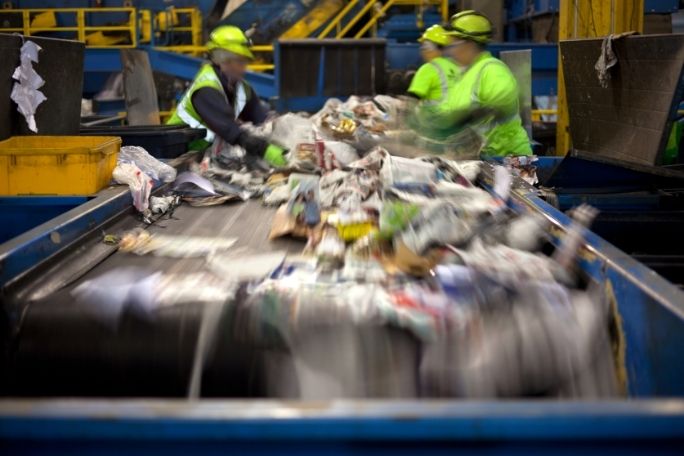Lesson summary
Students will investigate the amount of waste being produced by Australians each year, as well as recycling rates and greenhouse gas emissions, by analysing graphs and statistics. They will then learn about Waste to Energy (WtE) technologies employed at Visy’s Kraft Mill in Tumut and compare energy output and efficiency with coal power plants. Students will also investigate calorific value and how WtE facilities can reduce large quantities of waste from landfill and prevent the associated carbon emissions. Students will use a variety of mathematical skills to complete this investigation including percentage, rate, formulas (efficiency), data analysis and problem solving.
Learning intentions:
Students will...
- understand how materials that aren't recycled can cause problems
- understand how clean and sustainable technologies, including waste-to-energy facilities, can reduce environmental impacts
Success criteria:
Student can...
- recognise trends in data and understand effects
- use efficiency and calorific value calculations to make comparisons
- name one specific problem caused by the production of waste
- be able to use a variety of mathematical skills to solve problems
- be able to identify trends in data.
Lesson guides and printables
Lesson details
Curriculum mapping
Australian curriculum content descriptions:
Year 7 Maths:
- Find percentages of quantities and express one quantity as a percentage of another, with and without digital technologies (ACMNA158).
- Investigate, interpret and analyse graphs from authentic data (ACMNA180).
Year 8 Maths:
- Solve problems involving the use of percentages, including percentage increases and decreases, with and without digital technologies (ACMNA187).
- Solve a range of problems involving rates and ratios, with and without digital technologies (ACMNA188).
Year 9 Maths:
- Solve problems involving direct proportion. Explore the relationship between graphs and equations corresponding to simple rate problems (ACMNA208).
- Additional – Express numbers in scientific notation (ACMNA210).
General capabilities: Numeracy, Critical and creative thinking, Ethical understanding.
Cross-curriculum priority: Sustainability OI.8.
Relevant parts of Year 7 Mathematics achievement standards: Students solve problems involving percentages and all four operations with fractions and decimals. They interpret simple linear representations and model authentic information.
Relevant parts of Year 8 Mathematics achievement standards: Students solve everyday problems involving rates, ratios and percentages.
Relevant parts of Year 9 Mathematics achievement standards: Students interpret ratio and scale factors in similar figures. They apply the index laws to numbers and express numbers in scientific notation.
Unit of work: Visy Education – Secondary Mathematics.
Time required: 75 mins.
Level of teacher scaffolding: Medium – the teacher will need to provide context and scaffolding where necessary and lead the investigation.
Resources required
- Student Worksheets (one per student)
- Device capable of projecting images to the class
- Next 20 Years – Waste Production Graph
- Energy From Waste Graph 1
- Energy From Waste Graph 2
- Energy Flowchart
Skills
This lesson is designed to build students’ competencies in the following skills:
- Critical thinking
- Global citizenship
- Problem solving
- Social skills
Additional info
This lesson has been developed in partnership with Visy. For over 70 years Visy has been committed to finding sustainable solutions for Australia and New Zealand’s recyclables and helping to reduce local landfills. Visy collects, receives and sorts paper, cardboard, glass, plastics, steel and aluminium from households, businesses and schools with the purpose of reusing these products in the re-manufacture of new packaging products.


Welcome back!
Don't have an account yet?
Log in with:
By signing up to Cool.org you consent and agree to Cool's privacy policy to
store, manage and process your personal information. To read more, please see
our privacy policy here(Opens in new tab).
Create your free Cool.org account.
Many of our resources are free, with an option to upgrade to Cool+ for premium content.
Already have an account?
Sign up with:
By signing up to Cool.org you consent and agree to Cool's privacy policy to
store, manage and process your personal information. To read more, please see
our privacy policy here(Opens in new tab).